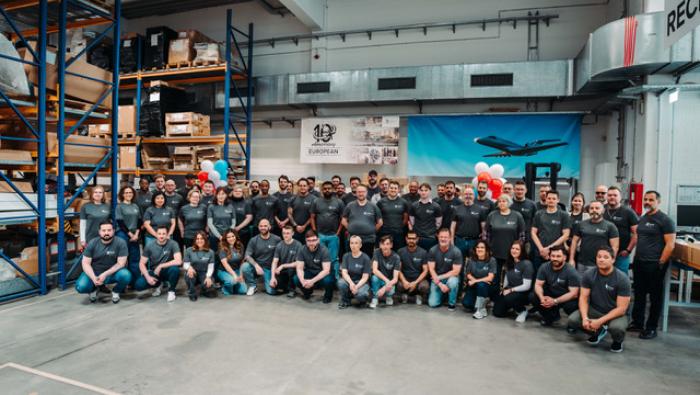Duncan Aviation, which lays claim as the largest privately owned business jet service provider in the world, is pressing ahead with major expansion plans in both Lincoln, Nebraska, and Battle Creek, Michigan. Speaking with AIN ahead of this year’s NBAA show, Duncan Aviation president Jeff Lake explained that the company hatched the plans for significant expansion before the onset of the Covid pandemic, attesting to its prescience ahead of the industry’s rapid growth since then.
Using the latest “green” construction technologies, the company worked with long-time partner Tectonic Management Group to build at both locations a 46,000-square-foot hangar with 32-foot-high doors and an additional 62,000-square-foot, two-floor wing for storage and back shops.
Costing about $66 million and slated for completion during next year’s first quarter, the projects feature sustainability elements such as light harvesting, radiant floor heating with energy-efficient boilers, LED lighting fixtures with sensors, and automatic dimming. Tectonic estimates that its buildings and systems will perform more than 25 percent more efficiently than required by standard energy codes.
The increased footprint for aircraft projects will require the addition of 80 employees at each location “in the short term,” said Lake, and the hiring push has begun. The jobs include airframe technicians as well as positions in interior, installations, engine, paint, and support shops.
The Lincoln and Battle Creek expansions follow a similar project completed in 2019 in Provo, Utah, where the employee roles have expanded from 125 to 400 since then. Capabilities in Provo include avionics installations and modifications; interior completions; airframe maintenance for all models of Bombardier, Gulfstream, Dassault, Embraer, and Textron Aviation aircraft; on-wing engine work, engine changes, and quick turns; paint; and ground support equipment manufacturing.
The Provo site also hosts a two-year A&P apprenticeship program, one of the initiatives Duncan has instituted to address the alarming shortage of maintenance professionals. “We have been able to add significant [numbers] this year,” said Lake. “I would say we were much more challenged last year. It was really tough to even get people to apply for jobs. We couldn’t get people in to interview.”
The extent of the shortage varies depending on where the need for mechanics arises, observed Lake, who noted that Provo has presented a particular challenge. “We were more challenged in Provo just because of the competition [for talent] we had there,” he explained. “Years ago, when we decided to go into Provo, in the 2007, 2008 timeframe, it was much different. So we thought we had a very good labor market…but over the past 10 years, Provo and that whole valley just exploded.
“When we look for locations, people sometimes wonder, ‘Why are you in Battle Creek, Michigan, or why are you in Lincoln, Nebraska?’ And quite honestly, we have an advantage getting that labor resource here because we’re not competing with a bunch of other large manufacturers or MROs.”
The other big challenge for Duncan—as for virtually every player in the MRO business—centers on the supply chain disruptions and the resulting lack of parts availability. The situation has strained the company’s ability to perform repairs in a timely way, explained Lake, who added that the problem cuts across just about every area of need and extends to things such as engineering services Duncan outsources. Meanwhile, late parts deliveries mean aircraft that should have left Duncan’s facilities remain in the hangar, taking space it needs to accommodate new business.
“Hopefully we’ll see some improvement by the middle of next year,” said Lake. “At the same time, you can’t just hope for something. So we’re doing everything we can to make sure we’re pre-planning better and looking for other sources…So we’ve really worked with our customers to schedule out in advance. We’ve got work scheduled for well into next year. We’ve even got aircraft scheduled into 2025.”







